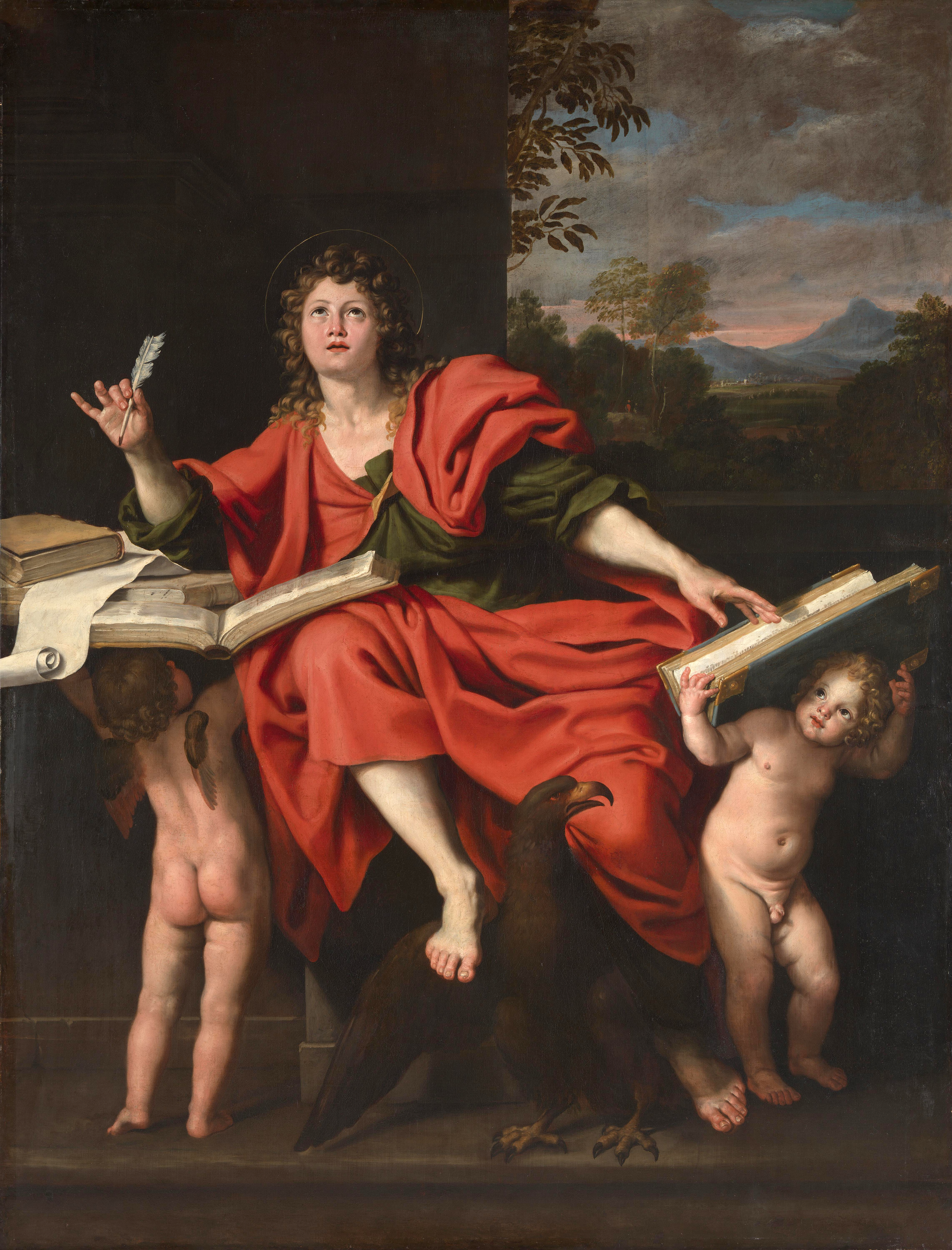
Johannine epistles
The Johannine epistles, the Epistles of John, or the Letters of John are the First Epistle of John, the Second Epistle of John, and the Third Epistle of John, three of the catholic epistles in the New Testament. In content and style they resemble the Gospel of John. Specifically in the First Epistle of John, Jesus is identified with the divine Christ, and more than in any other New Testament text, God's love of humanity is emphasised.[1]
The letters are anonymous, but since the late second century, when Irenaeus referred to the first two epistles, they have been connected to John, son of Zebedee, who according to the gospels was one of the twelve disciples and part of Jesus's closest circle.[2] The third epistle is mentioned beginning in the middle of the third century, and due to its similarity with the Second Epistle of John (e.g. both being written by someone referred to as the elder) it was included with the other two, creating the collection known as the Johannine epistles.[2] Athaneus's festal letter of 367 is the earliest case of the three letters being counted as catholic.[2][3] While the second and third epistles appear to be real letters, the first epistle lacks both introduction and ending, more resembling an exhoratory writing or a sermon.
Most scholars assume the letters to have been written simultaneously and after the Gospel of John, dating them between AD 85 and 100.[4] Most scholars agree that all three letters are written by the same author, although there is debate on who that author is.[5][6][7] Most often, the letters are attributed to someone in the Johannine community, most often a letter redactor of the Gospel.[2] A popular theory is that they were written by a presbyter, called John the Presbyter, who is named by Papias.[8]
Recipients[edit]
The Gospel of John and the Johannine Epistles were written in a short timespan to address the same set of questions. They deal with Jewish discussions and focus on the confession of Jesus as Messiah.[9] All of the writings concern an undergoing schism or conflict, where enemies are threatening the recipients', and their communities', identity and rules.[2] What separates the Gospel and the Epistles is not time, place, or content, but author.[9] However, while the texts have a Jewish character, many argue that the three letters are still addressed to Christians and that the congregations to which the letters are written are probably not dominated by Jews.[9] Others see similarities between the Johannine Epistles' dualism and the sectarian Jewish group connected to the Qumran and the Dead Sea Scrolls, often considered to be Essenes. They argue that the Johannine community can have developed from a similar schismatic Judaism.[2]
Dating[edit]
All three Johannine epistles are assumed to have been written simultaneously,[18] in a span of at most 10 years. Their dating depends partly on the Gospel of John.[2] Most scholars think that the main parts of the Gospel of John, and some even think that the entire gospel, preceded the epistles. Some scholars argue that the letters were written before the final redaction of the gospel, or that at least the first two letters were.[2] Thusly, the epistles are usually dated to around the year 100. Those who argue that the final redaction of the Gospel of John happened simultaneously, or slightly after, the writing of the epistles, date the letters to the very end of the first century.[2] They are thus usually dated to 95-100. Daniel L. Akin represents a minority position and dates the letters to the period 85-100.[24] Lars Hartmann dates the letters no later than the year 100.[18] Udo Schnelle thinks that the third letter was written shortly after the second, around the year 90.[25] Raymond E. Brown dates the letters to around the year 100.
A few scholars argue for a much earlier compositional date, before the year 70, and a few for a much later date, in the middle of the second century and as late as 170-180, but these datings have not won much support in academia.[2]